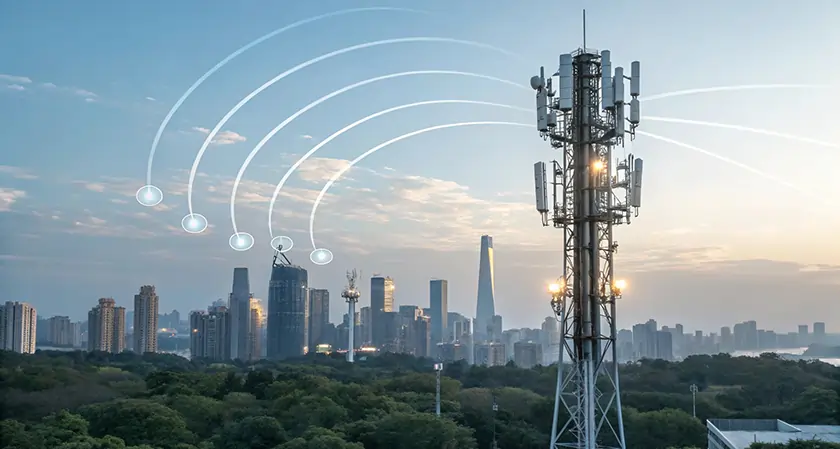Home Innovation Telecom Dialing Into the Future- The 2...
Dialing Into the Future- The 2025 Telecom Signal Boost
Telecom

Business Fortune
23 April, 2025
Analysts project the telecommunications market will grow by 3.67% yearly amounts until 2027. The market grows because new prominent industry entrants strive to challenge existing leaders like AT&T, Verizon, and Comcast.
The telecom sector will experience major developments through privatized 5G networks and AI technology and expanded satellite internet connectivity. The following article explains the key telecom industry developments that will shape 2025 and beyond.
5G Expansion
5G's network growth enables telecom providers to supply improved data transfer rates and enlarged capacity. 5G wireless technology delivers superior performance than 1G-4G systems. The global economic output supported by 5G technology is expected to reach more than $13 trillion by 2035. This network operates at a higher scale while managing bigger data quantities. These capabilities explain 5G's association with the Internet of Things (IoT) and its support for augmented reality (AR) and virtual reality (VR).
AI and Automation
AI and automation establish themselves as the most influential technologies after 5G to shape telecommunications. Networks and operational functions run better when AI integration takes place while automation streamlines work processes and enhances customer contact support. Telecom corporations that lead the market are using predictive analytics from AI to monitor and forecast when service maintenance activities are required for sustainable network performance.
Network Slicing
5G services that implement smart parking meters need strong security alongside reliability yet driverless cars require ultra-low latency (URLLC) and high data speed features. Network slicing in 5G makes diverse services possible along with resource transfers between virtual network slices to eliminate universal service delivery approaches.
Edge Computing
The combination of edge computing solutions allows organizations to enhance device response speeds while extracting enhanced value from device-based information. The capability to perform real-time operations in places where it would have been impossible beforehand emerges through edge computing which also avoids network congestion affecting edge device supports. Edge computing prevents modern business networks from being overwhelmed by the huge amount of data produced by edge devices which would impair network-based operations on that affected network.
Quantum Technology
Advances in quantum technology have the potential to vastly improve processing performance and communication speed. Additionally, Quantum Key Distribution (QKD) networks will allow the secure distribution of cryptographic keys through their communications infrastructure. A majority of executives actively deploy quantum technology systems at present. The priority of these organizations is the safeguarding of customer information while implementing effortless IoT device authentication processes as well as protecting Telecom infrastructure through encryption systems and network traffic encryption.
Conclusion
Telecoms can extend their market advantage in their competitive industry by using marketing strategies that match current market trends. Marketers need to employ every available technology tool such as artificial intelligence and machine learning for delivering top-tier omnichannel experiences which foster customer loyalty and accomplishment of conversion goals.


































